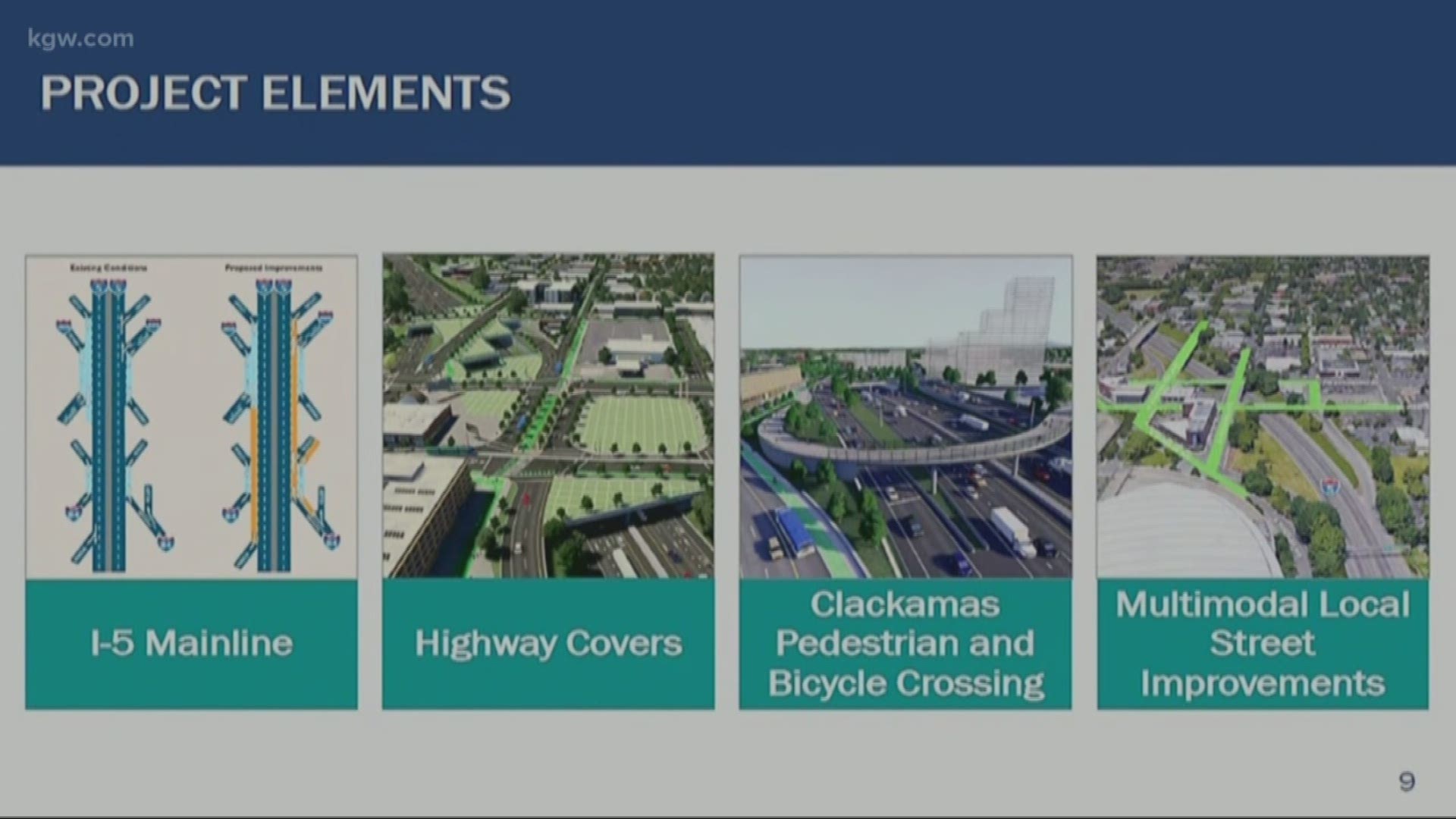PORTLAND, Ore. — An expansion of Interstate 5 at the Rose Quarter on Thursday was unanimously approved by the Oregon Transportation Commission to move forward, without another lengthy environmental review.
The $715 million plan would add merging lanes on both sides of I-5 between I-405 and I-84, among other features. The area, basically right next to the Moda Center, is one of the biggest bottlenecks in Oregon. The Oregon Department of Transportation says the plan will reduce crashes in this area.
Groups like No More Freeways say the state should encourage alternative forms of transportation, instead of adopting a plan that could encourage more people to drive.
Lots of environmental groups urged the state to hit pause on the project and do a longer environmental study on the impacts. But the commission said no; they don't want to wait for that.
Aside from the environmental impact, another key point of tension is the freeway's impact on the Albina neighborhood, which was basically cut in half when I-5 was built. The commission hopes the expansion will also heal some of those wounds.
ODOT expects to have the project finished in about seven years.
This Rose Quarter expansion has been a long time coming, but how did we get here?
1962 – Really, we have to start in 1962 when I-5 carved its way up through Oregon and through the lower Albina neighborhood. That, on top of the building of the Memorial Coliseum, Emanuel hospital and the Albina community plan in 1993, kicked hundreds of African American families out of their homes.
2017 - The Oregon legislature passed a $5.3 billion bill to pay for transportation projects. It raised taxes on gas, income and car sales to pay for projects that reduced congestion throughout the state. Gov, Brown called it one of her biggest priorities. And the I-5 expansion was one of the crown jewels.
Over the years, it's been a hot topic every time it comes up in community meetings, with dozens of environmental, transportation and social justice advocates coming out to speak their minds.
January 2020 – Several Portland politicians indicated they would oppose the plan unless there was a more extensive environmental review and justice for the Albina neighborhood.
March 27, 2020 – Officials backed off from their environmental demands.
This leads us to April 2, when the Oregon Transportation Commission said the project can move forward without a lengthy environmental review.

